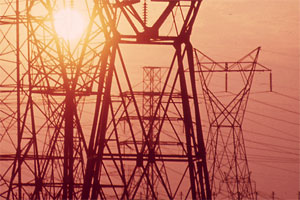Along the way, the program is designed to give a boost to the state’s building industry, where unemployment rates can be twice as high as other industries. In order to participate, Sorani will have to work with a licensed contractor, one that's been trained specifically to work with Energy Upgrade California. The contractors apply for permits, and complete the paperwork necessary for taking advantage of various rebates and tax credits.
“It’s basically the concept that most of us in California live in homes that aren’t well insulated,” says Dian Grueneich, an an appointee of former Governor Schwarzenegger to the California Public Utilities Commission, which oversees PG&E and other utilities. She’s one of the people responsible for Energy Upgrade California.
“The only way we’re going to change that is this massive effort, of going into every home in the state, and improving them.”
This project will be voluntary and, as you might expect, expensive. To reach the first 52 thousand homes, utilities throughout the state will spend $113 million, all of it collected from monthly utility bills. The American Recovery and Reinvestment Act will provide another $160 million.
But if the program succeeds, Grueneich says the utilities -- and by extension, the rest of us -- all save money. “You add it up on a large scale like California, and what they don’t have to do is build power plants and transmission lines.”
Of course, traditionally, building power plants and transmission lines is how utilities make money. From an environmental perspective, energy efficiency makes a lot of sense. But what's in it for the utilities?
Three decades ago, California took a major success toward solving this problem, by designing a system known as “decoupling.” It’s now been replicated in several other states. The idea is that by restructuring the market, the system might incentivize efficiency, so that utilities make more money when they sell less energy.
Over the last five years, efficiency has become a very expensive endeavor. In fact, some critics, such as Cheryl Cox, argue that it’s become much too expensive. Cox is a Policy Adviser with the Division of Ratepayer Advocates, a group that's been critical of the utility programs.
“Since 2006, when utilities began administering these efficiency programs, ratepayers have spent about 7 billion dollars – that will be through 2012.”
That comes out to about $3 dollars a month, from almost every home in the state. Where has all this money gone? Well, perhaps the biggest chunk of has gone to pay for one, single technology: light bulbs.
Since 2006 utilities have bought well over a hundred million CFL light bulbs, paid for out of our monthly energy bills. Those bulbs were given away for free or sold at steep discount at hardware stores.
The program has been controversial. On the one hand, CFLs are an easy fix. They use a quarter of the electricity that incandescent bulbs do, and they’re quick to install.
On the other hand, says Cheryl Cox, the light bulb program has a high degree of what’s called “free-ridership.” A lot of people would have bought the bulbs anyway, even without the subsidies.
“We need to be looking at how we can value long-term savings,” says Cox, “not light bulbs that maybe last two years. We need to look at how we can use those ratepayer dollars more cost-effectively and more strategically.”
Enter Energy Upgrade California, which targets not specific gadgets, like light bulbs, but a person’s entire house. Compared to what the state has spent on light bulbs, energy upgrade California is still a small slice of the pie, says Cox, but it’s a start.
Grueneich agrees. “What’s amazing,” she says, “is that we didn’t all embark on this ten years ago.”
When it comes to energy efficiency, Californians have a lot to be proud of, says Devra Wang, of the Natural Resources Defense Council.
“I think the debate is really over whether the programs are doing an amazing job, or just a very good job,” says Devra Wang, who directs the California Energy Program for the Natural resources Defense Council.
Wang says that despite bigger houses, more electronics, and more air conditioning, the average Californian uses as much electricity as we did 30 years ago.
“California has kept its per-capita energy consumption flat over the last 30 years, while the rest of the country has increased about 50 percent.”
The hope, she says, is that Energy Upgrade California will help keep that strong track record in place.
To participate in Energy Upgrade California, the first step is to get in touch with a participating contractor. Rebate amounts depend on how much efficiency work you do.
If you live outside of SMUD, PG&E or SoCalGas service areas, select your county from the pull-down list on the following page to learn about local equivalent energy upgrade programs.
 Marco Sorani lives with his wife and two daughters in a single-story Mediterranean-style house near San Francisco's Lake Merced. While Sorani loves the place, he has some complaints about the way heat moves from one end of the house to the other.
Marco Sorani lives with his wife and two daughters in a single-story Mediterranean-style house near San Francisco's Lake Merced. While Sorani loves the place, he has some complaints about the way heat moves from one end of the house to the other.